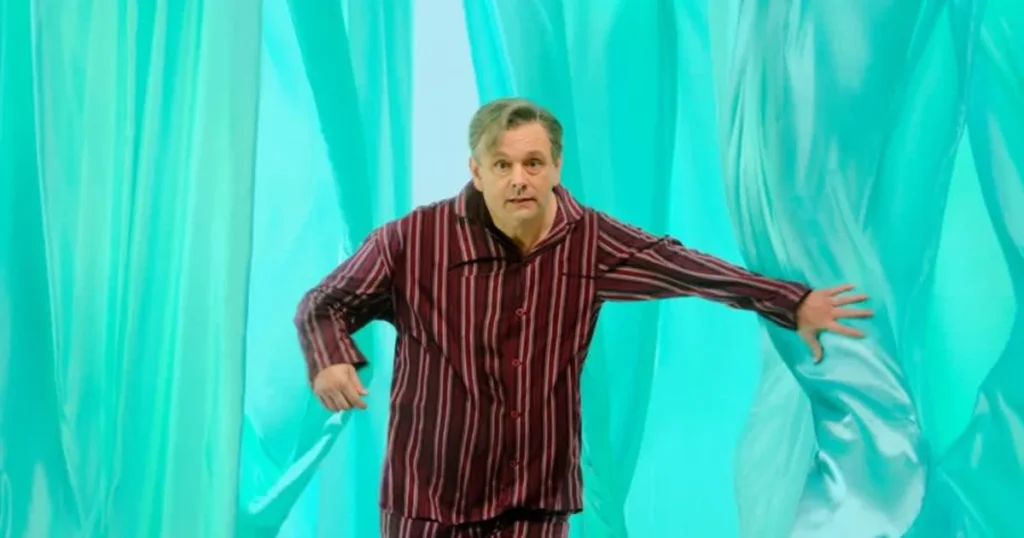Jon Gower reviews ‘Under the Tump: Sketches of Real Life on the Welsh Borders’ by Oliver Balch.
Under the Tump: Sketches of Real Life on the Welsh Borders.
Oliver Balch
Faber & Faber, £14.99
For some the dream of leaving a city life behind and settling in the countryside is a complex and difficult one, fraught with uncertainties. But it can be compelling, too, and that is certainly the case with Oliver Balch, a much-travelled young journalist who has penned books about South America and India. Having lived in London and Buenos Aires he upped sticks, or, rather upped it to the sticks, decamping his family to Clyro, a mere thrush’s hop from Hay-on-Wye.
Wanting to belong to a place doesn’t necessarily sanction belonging and some of the opening chapters find him spending time with true country folk, taciturn not because they are rude, or have something to hide, but simply because that’s the way they are. Imagine someone trying to write the biography of Iago Prytherch: it would not be a capacious volume exactly. So Balch spends Wednesday nights in the unviably empty and unchangeing Rhyd-y-Spence Inn, chatting amiably to the handful of regulars but not really getting to know them all that well. The same applies to the young farmers he meets. Again they’re friendly enough, but their world is closed to him even after attending YFC meetings and a barn dance which descends into a brawl. Some of the exchanges between Balch and Woko, a farmer in the twilight years as a Young Farmer see them both squirming at the awkwardness of it all. He is “being exposed to worlds about which he has hitherto not known.”
So this might have devolved into a journal of social difficulty, a diary of other people’s ineloquence, therefore, had it not been for Balch having a masterstroke – albeit it an obvious one – in spending time with the hyper Romantic Francis Kilvert, the Victorian diarist who also lived in Clyro, who more than makes up for the tight-lipped and taciturn subjects of Balch’s early enquiries. Kilvert injects blurts of colour into his accounts, so we hear the year’s first yaffingale, or green woodpecker ‘laughing in the dingle’ and the sight of fawn-coloured turkeys ‘mourning in the stubbles.’
Kilvert has great tales to tell, not least the one about a birth in a house called The Pant, which straddles the border. The attending midwife insisted the baby be born in England which led to the baby being born in the eastern half of the cottage, the mother ‘delivered of the child standing.” In these cracking diaries we also hear about the vicarage-less vicar who lived in a three bathing machines he had delivered from Aberystwyth and of course about Daisy, the much-too-young-for-him daughter of the Thomases from Llanthomas. Kilvert fell heels over head in love with her, a love thwarted by the family, thus seeding a later, deep sadness in the diarist.
There’s another writer who figures in the book and this time, more unexpectedly. Balch ponders the late, great John Updike’s musings about belonging and place in a radio interview about his move from the city to Ipswich in Massachusetts. There, in the small coastal town Updike found a place where people knew each other, who really knew each other. As Updike puts it “It’s a kind of community really in what I take to be the classic sense. In that if your child has toothache on the weekend, you can call up the dentist you personally know. There’s that kind of knit.” It’s that “knit” – what the Spanish call conviviencia, or “together-living” – that Balch tries to unravel in this warm and companionable book.
Under the Tump begins to properly hit its stride in the second part, entitled “Incomers.” These incomers are much more open and frank so that Balch’s portrait of Rob and Layla and the “Majestic Bus” on their acre of land they rent out to holidaymakers, or temporary bucolics, who come to Radnorshire for a spot of rural R & R is full of telling detail.
We thus meet a couple who started by opting for the life they wanted and worked back from there, devising a way to make it happen.” You finish the chapter having properly got to know them, and like them, to boot. And we learn a lot about the Panorama bus, too, with its “chrome-striped trim and wrap-around windscreen, its Cape Canaveral radiator grille and its racy curves. Even the twin headlights – rounded, protuberant, bright as glitter balls – screamed cool.”
Balch is by now not just a bit of a bus aficionado but he is also now among his kin, who are, as a tribe “a mixed bunch, washed up on the banks of the Wye from all over.” Meeting these free spirits, and being stirred by the spirit of the place, brings out the Romantic in him, imagining a bluebell palace for a queen with a floral crown where men and beasts would come, “striding along hidden pathways through the heather and purple moor grass, drawn onward by the sweet sound of merriment from its hawthorn halls.” It’s in this section that Balch begins to emerge as a fine writer about the countryside, noting how the “Wild hedgerows make darting, squiggling runs towards the tree-crested horizon. The farmer’s fields shrink and bloat, blindly led by the contoured countryside. It is all dips and folds.”
The book soon sees Balch beginning to properly settle in – at the Hay Festival, meeting the market stall-holders in the lee of the castle, hearing gossip about the swingers’ set in Ross-on-Wye and encountering Richard Booth, or Richard III, the self-styled King of Hay-on-Wye who remains deliciously eccentric, having just set up the Royal University of Cusop Dingle.
In the closing chapters Balch ponders the Cotswoldification of the area, probes the politics of the town council, and finds the perfect place to locate just where he’s at on his journey into place when he goes to see the England versus Wales rugby match. One closes this warm and gently examining book seeing a man quietly and tentatively settling into a new home. I think Kilvert would have liked Balch, both being appreciative and attentive men. And he’d have been fascinated by the view under the tump, to see how things have changed, albeit changed on Hay time, which is like sidereal time, only odder.





